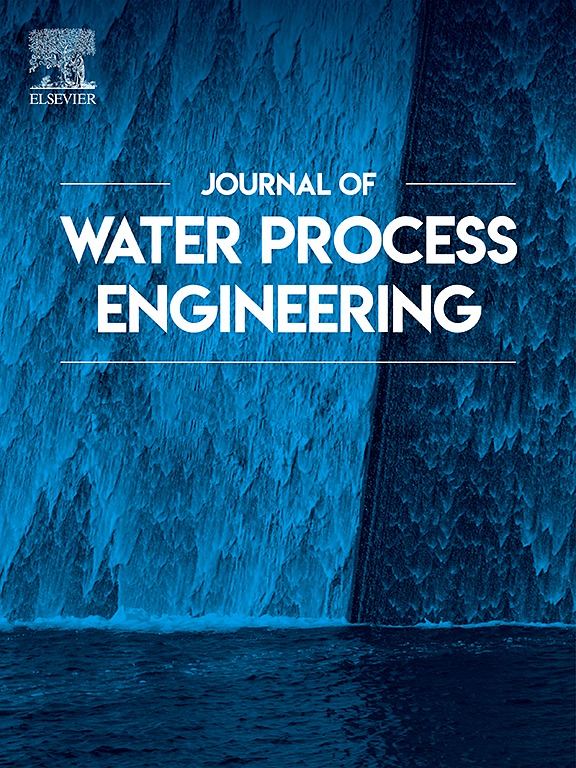Simulation-based optimization of urban water storage tank operations: Balancing hydraulic stability, water quality, and energy conservation
IF 6.3
2区 工程技术
Q1 ENGINEERING, CHEMICAL
引用次数: 0
Abstract
The installation of secondary water supply systems (SWSS) is essential for balancing water demands and ensuring reliable water supply in urban distribution networks. However, optimizing the operation of storage tanks to enhance overall system performance is a challenging task due to the interplay of multiple interconnected factors. This study presents a novel approach through a multi-objective simulation-based framework to determine optimal inflow profiles of storage tanks. It focuses on three key performance metrics: pressure fluctuations, pumping energy consumption, and water quality degradation. Through simulation analysis, this study successfully identified non-dominated trade-off alternatives, which were further validated using experimental investigations conducted in a laboratory-scale water supply system equipped with multiple SWSSs. Compared to traditional control strategies, the optimal compromise solution identified from the Pareto front demonstrated significant improvements: reducing pressure fluctuations by 82 %, cutting hydraulic retention time by 52 %, and lowering pumping energy consumption by 6 %, respectively. In dynamic real-world scenarios, where water demand and system conditions fluctuate constantly, the proposed approach can adaptively optimize system performance by leveraging a hot-start method based on prior solutions. This study provides a promising framework for optimizing the operation of urban storage tanks, striking a balance between pressure stability, water quality preservation, and energy efficiency. It thus serves as a valuable reference for managing complex urban water supply systems.

求助全文
约1分钟内获得全文
求助全文
来源期刊

Journal of water process engineering
Biochemistry, Genetics and Molecular Biology-Biotechnology
CiteScore
10.70
自引率
8.60%
发文量
846
审稿时长
24 days
期刊介绍:
The Journal of Water Process Engineering aims to publish refereed, high-quality research papers with significant novelty and impact in all areas of the engineering of water and wastewater processing . Papers on advanced and novel treatment processes and technologies are particularly welcome. The Journal considers papers in areas such as nanotechnology and biotechnology applications in water, novel oxidation and separation processes, membrane processes (except those for desalination) , catalytic processes for the removal of water contaminants, sustainable processes, water reuse and recycling, water use and wastewater minimization, integrated/hybrid technology, process modeling of water treatment and novel treatment processes. Submissions on the subject of adsorbents, including standard measurements of adsorption kinetics and equilibrium will only be considered if there is a genuine case for novelty and contribution, for example highly novel, sustainable adsorbents and their use: papers on activated carbon-type materials derived from natural matter, or surfactant-modified clays and related minerals, would not fulfil this criterion. The Journal particularly welcomes contributions involving environmentally, economically and socially sustainable technology for water treatment, including those which are energy-efficient, with minimal or no chemical consumption, and capable of water recycling and reuse that minimizes the direct disposal of wastewater to the aquatic environment. Papers that describe novel ideas for solving issues related to water quality and availability are also welcome, as are those that show the transfer of techniques from other disciplines. The Journal will consider papers dealing with processes for various water matrices including drinking water (except desalination), domestic, urban and industrial wastewaters, in addition to their residues. It is expected that the journal will be of particular relevance to chemical and process engineers working in the field. The Journal welcomes Full Text papers, Short Communications, State-of-the-Art Reviews and Letters to Editors and Case Studies
 求助内容:
求助内容: 应助结果提醒方式:
应助结果提醒方式:


